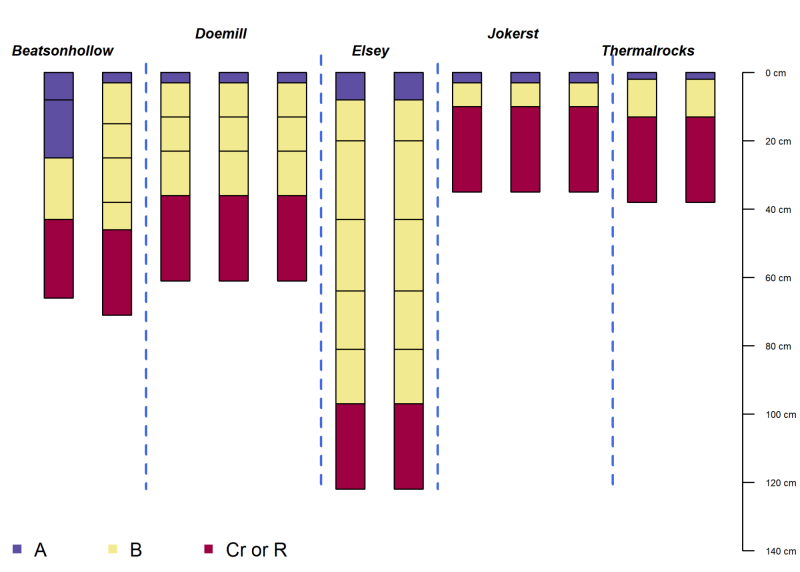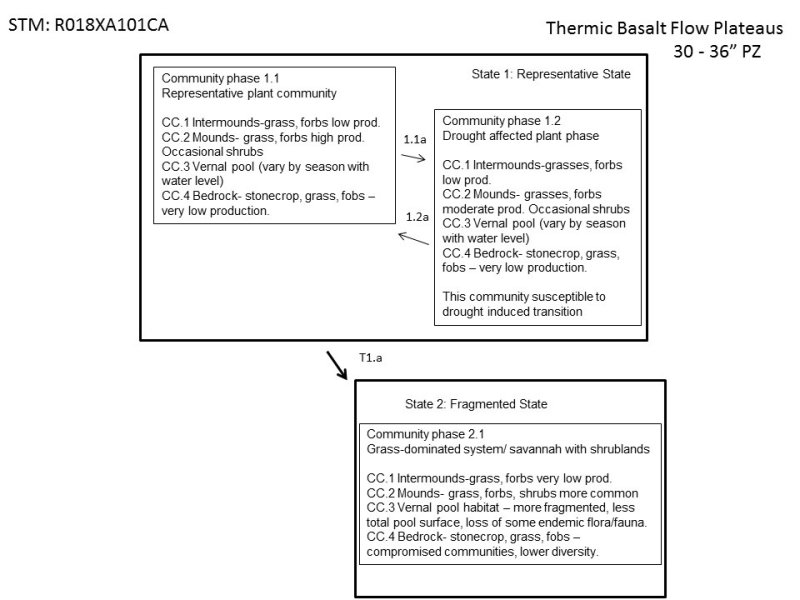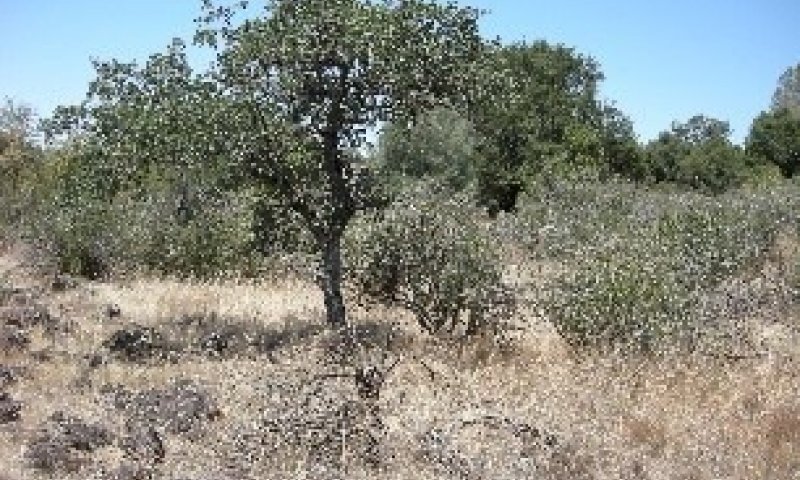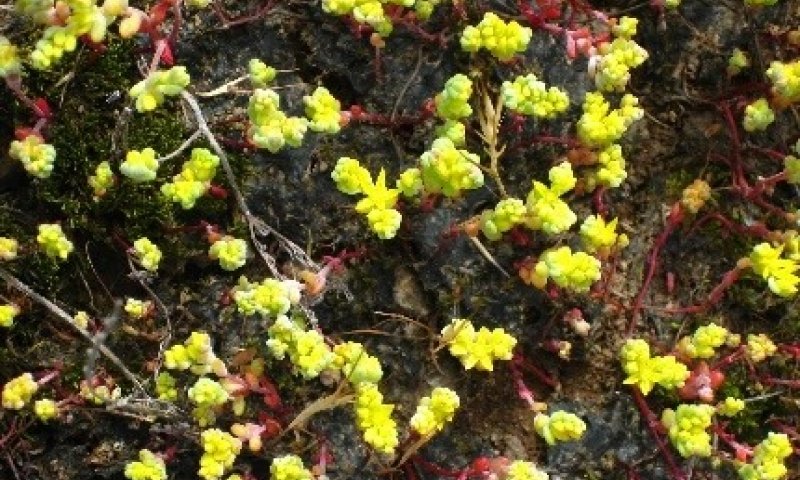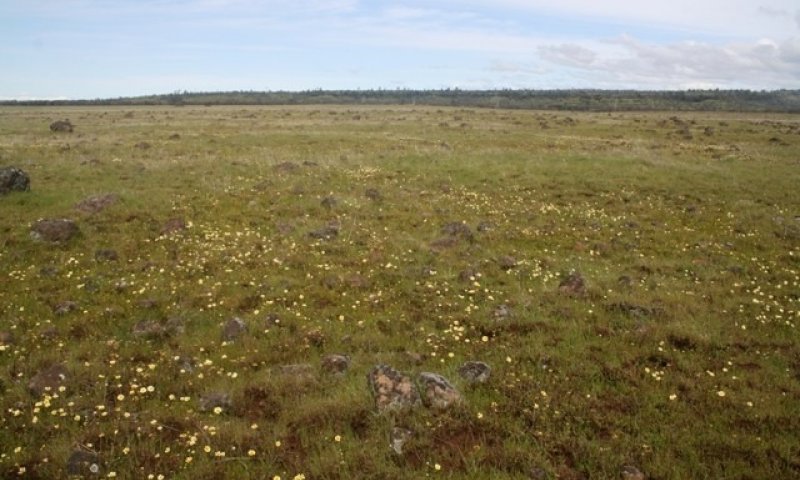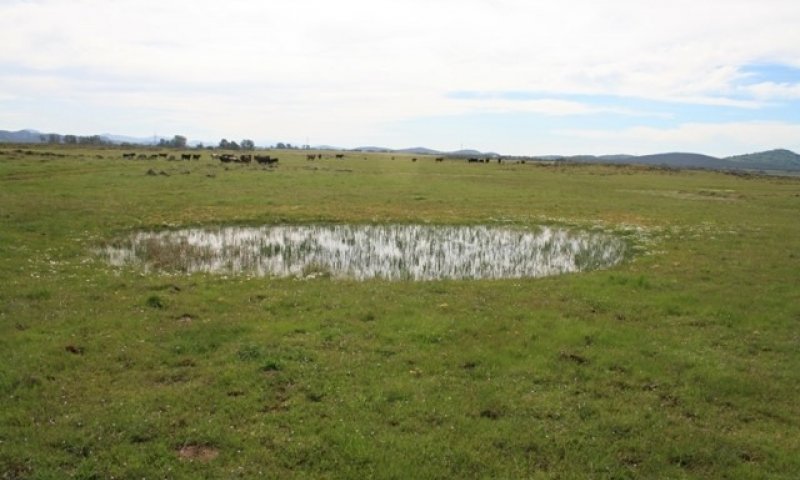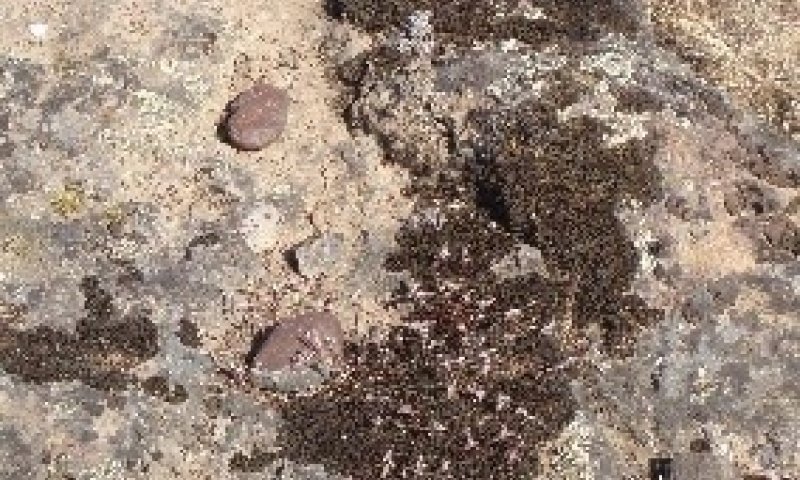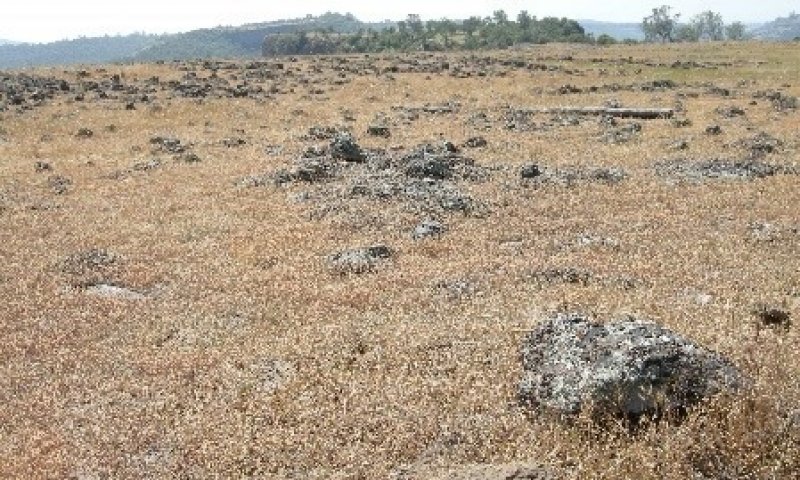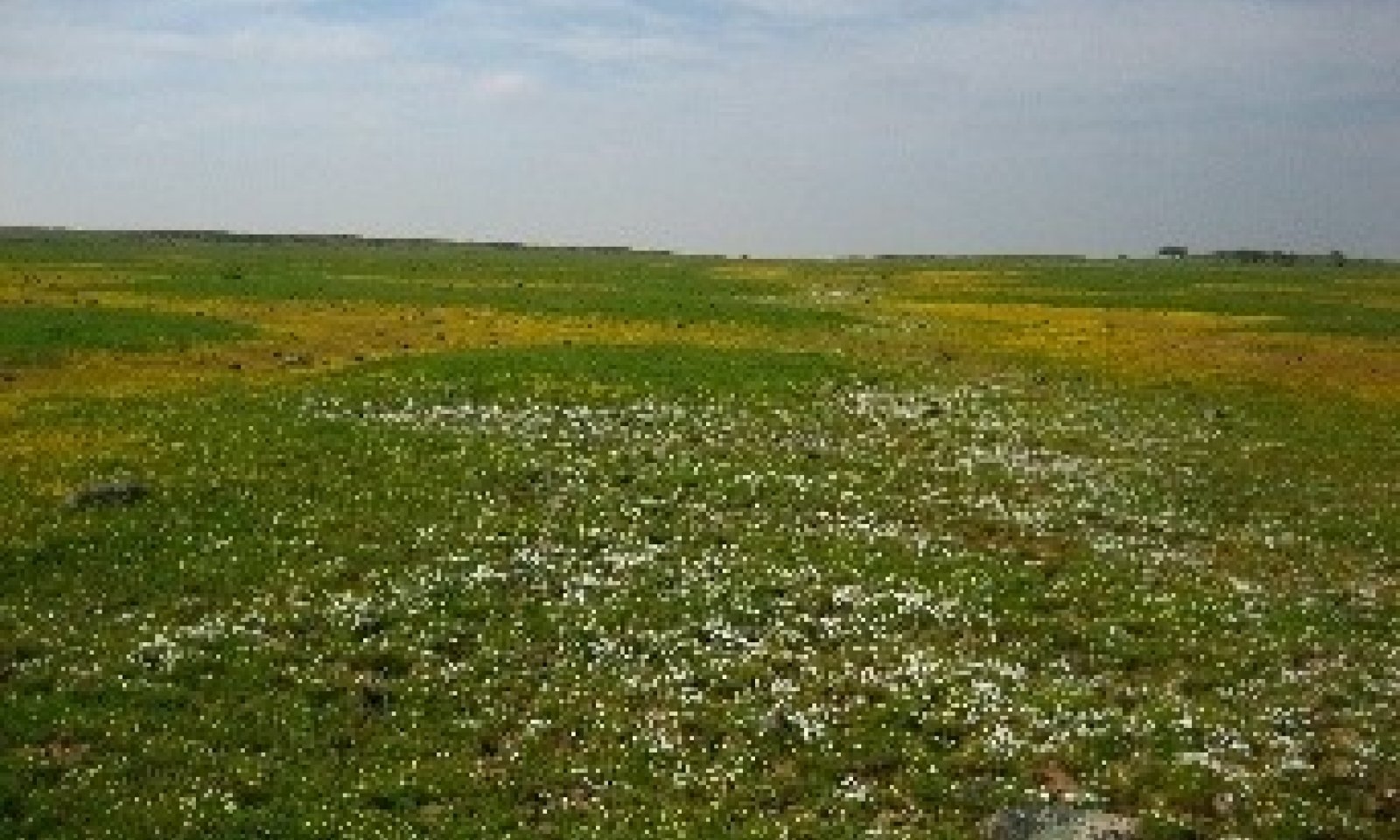

Natural Resources
Conservation Service
Ecological site R018XA101CA
Basalt Flow Plateaus
Last updated: 4/24/2024
Accessed: 12/21/2025
General information
Provisional. A provisional ecological site description has undergone quality control and quality assurance review. It contains a working state and transition model and enough information to identify the ecological site.
MLRA notes
Major Land Resource Area (MLRA): 018X–Sierra Nevada Foothills
Major Land Resource Area (MLRA) 18, Sierra Nevada Foothills is located entirely in California and runs north to south adjacent to and down-slope of the west side of the Sierra Nevada Mountains (MLRA 22A). MLRA 18 includes rolling to steep dissected hills and low mountains, with several very steep river valleys. Climate is distinctively Mediterranean (xeric soil moisture regime) with hot, dry summers, and relatively cool, wet winters. Most of the precipitation comes as rain; average annual precipitation ranges from 15 to 55 inches in most of the area (precipitation generally increases with elevation and from south to north). Soil temperature regime is thermic; mean annual air temperature generally ranges between 52 and 64 degrees F. Geology is rather complex in this region; there were several volcanic flow and ashfall events, as well as tectonic uplift, during the past 25 million years that contributed to the current landscape.
LRU notes
The Tuscan Flows LRU is the northernmost Land Resource Unit in MLRA 18. It occurs down slope of and is geologically related to the southern Cascades; however, its inclusion in MLRA 18 stems from the ecosystem’s close resemblance to other Sierra Nevada Foothill systems. This LRU is situated on a low elevation volcanic plateau at the northeast end of the Sacramento Valley. The geology includes, but not limited to late Pliocene and Quartenary basalt, andesite and andesitic lahars (mudflows). Several cinder cones dot the landscape and active fluvial processes are occurring in the larger canyons. Elevation ranges between 250 and 2000 feet above sea level on the main plateau, but can range as high as 3000 feet on the highest hills. Precipitation is among the highest in MLRA 18, ranging from 30 to 55 inches annually. Mean annual air temperature ranges between 56 and 62 F. Frost free days (generally exhibiting an inverse relationship with elevation) range from 184 to 282 days.
Classification relationships
CLASSIFICATION RELATIONSHIPS
This site is located within M261F, the Sierra Nevada Foothills Section, (McNab et al., 2007) of the National Hierarchical Framework of Ecological Units (Cleland et al., 1997), M261Fa, the Tuscan Flows Subsection.
Level III and Level IV ecoregions systems (Omernik, 1987, and EPA, 2011) are: Level III, Central California Foothills and Coastal Mountains and Level IV, Ecoregion 6a, Tuscan Flows.
Ecological site concept
This ecological site occurs on plateaus and erosion remnants formed in residuum from basalt lava flows. This site comprises a fine-scale mosaic with mounds, swale, and bedrock outcrops. Annual precipitation typically ranges between 32 and 36 inches. Slope percent ranges from 2 to 20%. Elevation ranges from 400 to 1350 feet. Soil temperature regime is thermic.
Plant communities in this ecological site are primarily constrained by hydrology, especially in the most poorly drained positions where seasonal ponding occurs. Common soils correlated to this ecological site are Doemill and Jokerst (Loamy, mixed, superactive, thermic Lithic Haploxeralfs); and Beatsonhollow and Thermalrocks (Loamy-skeletal, mixed, superactive, thermic Lithic Haplohumults). In some map units where this ecological site has been identified, particularly on broad plateau summits, there are unnamed components occurring in the swale positions representing frequent long ponding.
Beatsonhollow soils represent the swale portions of the landscape; these soils are poorly drained and are classified as loamy-skeletal, mixed, superactive, thermic Lithic Haplohumults. The vegetation community most likely to be found on the Beatsonhollow component includes soft chess (Bromus hordeaceus), medusahead (Taeniatherum caput-medusae), fillaree (Erodium spp.), rattlesnake brome (Bromus briziformis), lupine (Lupinus spp.), brodiaea (Brodiaea spp.) and vinegarweed (Trichostema lanceolatum).
Thermalrocks components are on shallow convex positions of basalt plateaus. These soils are classified as loamy-skeletal, mixed, superactive, thermic Lithic Haplohumults. These are better drained portions of the landscape with very high runoff; the vegetation consists of silver hairgrass (Aira caryophyllea), Sierra mock stone crop (Sedulla pumila), Hansons spike moss (Selaginella hansenii), soft chess (Bromus hordeaceus), filaree (Erodium spp.), red brome (Bromus rubens), medusahead (Taeniatherum caput-medusae), fiddleneck (Amsinckia spp.), lupine (Lupinus spp.), buckwheat (Eriogonum spp.), nitgrass (Gastridium spp.), vinegar weed (Trichostema), brodiaea (Brodiaea spp.) and Mariposa lily (Calochortus spp.).
Vernal pools make up approximately one to 2 percent of the landscape and may not be associated with every swale. These seasonal pools can vary year-to-year in size and duration. Between-year and within-year differences in hydrology influence the vegetation communities around the pools, which are generally dominated by annuals. During the early spring when the water table is high, plants such as Pacific foxtail (Alopecurus saccatus), eryngo (Eryngium), and meadowfoam (Limnanthes spp.) can be found near or within the pools.
Associated sites
| F018XA201CA |
Deep Thermic Hillslopes This site commonly occurs nearby. |
|---|
Similar sites
| R018XI101CA |
Shallow Latite Ridgetops Site relationships being developed. |
|---|
Table 1. Dominant plant species
| Tree |
Not specified |
|---|---|
| Shrub |
(1) Lupinus |
| Herbaceous |
(1) Bromus hordeaceus |
Click on box and path labels to scroll to the respective text.
